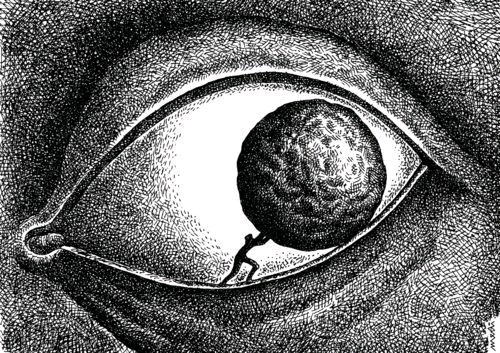EMDR Therapy

Francine Shapiro developed Eye Movement Desensitisation and
Reprocessing (EMDR) in 1987, utilising this natural process in order to successfully treat
Post-traumatic Stress Disorder (PTSD). Since then, EMDR has been used to effectively
treat a wide range of mental health problems.
What happens when you are traumatised?
Most of the time your body routinely manages new information and experiences without you being aware of it. However, when something out of the ordinary occurs and you are traumatised by an overwhelming event (e.g. a car accident) or by being repeatedly subjected to distress (e.g. childhood neglect), your natural coping mechanism can become overloaded. This overloading can result in disturbing experiences remaining frozen in your brain or being "unprocessed". Such unprocessed memories and feelings are stored in the limbic system of your brain in a "raw" and emotional form, rather than in a verbal “story” mode. This limbic system maintains traumatic memories in an isolated memory network that is associated with emotions and physical sensations, and which are disconnected from the brain’s cortex where we use language to store memories. The limbic system’s traumatic memories can be continually triggered when you experience events similar to the difficult experiences you have been through. Often the memory itself is long forgotten, but the painful feelings such as anxiety, panic, anger or despair are continually triggered in the present. Your ability to live in the present and learn from new experiences can therefore become inhibited. EMDR helps create the connections between your brain’s memory networks, enabling your brain to process the traumatic memory in a very natural way.
What is an EMDR session like?
EMDR utilises the natural healing ability of your body. After a thorough assessment, you will be asked specific questions about a particular disturbing memory. Eye movements, similar to those during REM sleep, will be recreated simply by asking you to watch the therapist's finger moving backwards and forwards across your visual field. Sometimes, a bar of moving lights or headphones is used instead. The eye movements will last for a short while and then stop. You will then be asked to report back on the experiences you have had during each of these sets of eye movements. Experiences during a session may include changes in thoughts, images and feelings. With repeated sets of eye movements, the memory tends to change in such a way that it loses its painful intensity and simply becomes a neutral memory of an event in the past. Other associated memories may also heal at the same time. This linking of related memories can lead to a dramatic and rapid improvement in many aspects of your life.
What can EMDR be used for?
In addition to its use for the treatment of Post-traumatic Stress Disorder, EMDR has been successfully used to treat:
anxiety and panic attacks
depression
stress
phobias
sleep problems
complicated grief
addictions
pain relief, phantom limb pain
self-esteem and performance anxiety
Can anyone benefit from EMDR?
EMDR can accelerate therapy by resolving the impact of your past traumas and allowing you to live more fully in the present. It is not, however, appropriate for everyone. The process is rapid, and any disturbing experiences, if they occur at all, last for a comparatively short period of time. Nevertheless, you need to be aware of, and willing to experience, the strong feelings and disturbing thoughts, which sometimes occur during sessions.
How long does treatment take?
EMDR can be brief focused treatment or part of a longer psychotherapy programme. EMDR sessions can be for 60 to 90 minutes.
Will I will remain in control and empowered?
During EMDR treatment, you will remain in control, fully alert and wide-awake. This is not a form of hypnosis and you can stop the process at any time. Throughout the session, the therapist will support and facilitate your own self-healing and intervene as little as possible. Reprocessing is usually experienced as something that happens spontaneously, and new connections and insights are felt to arise quite naturally from within. As a result, most people experience EMDR as being a natural and very empowering therapy.
What evidence is there that EMDR is a successful treatment?
EMDR is an innovative clinical treatment which has successfully helped over a million individuals. The validity and reliability of EMDR has been established by rigorous research. There are now nineteen controlled studies into EMDR making it the most thoroughly researched method used in the treatment of trauma, (Details on www.emdr-europe.org and www.emdr.org) and is recommended by the National Institute for Health and Clinical Excellence (NICE) as an effective treatment for PTSD.
(adapted from getselfhelp.co.uk)


